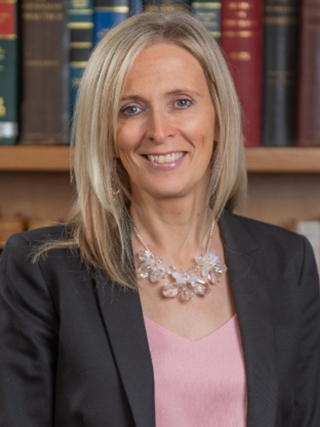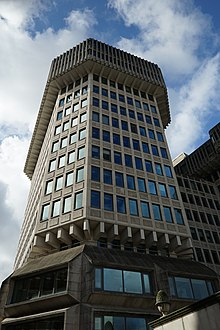
The Crown Prosecution Service (CPS) is the principal public agency for conducting criminal prosecutions in England and Wales. It is headed by the Director of Public Prosecutions.

His Majesty's Solicitor General for Scotland is one of the Law Officers of the Crown, and the deputy of the Lord Advocate, whose duty is to advise the Scottish Government on Scots Law. They are also responsible for the Crown Office and Procurator Fiscal Service which together constitute the Criminal Prosecution Service in Scotland.

The Master of the Household is the operational head of the "below stairs" elements of the Royal Households of the United Kingdom. The role has charge of the domestic staff, from the Royal Kitchens, the pages and footmen, to the housekeeper and their staff.
Sir John Christopher Sainty, KCB, FSA is a retired British parliamentary official who was Clerk of the Parliaments from 1983 to 1990.
Sir Paul Christopher Jenkins, KCB, QC (Hon), was a British barrister.
SirAugustus Frederick William Keppel Stephenson, was a Treasury Solicitor and the second person to hold the office of Director of Public Prosecutions in England and Wales.
Dame Juliet Louise Wheldon DCB, QC was a British civil servant, latterly the legal adviser to Mervyn King, the Governor of the Bank of England. From July 2000 until 2006 she was the first British woman to serve as Treasury Solicitor and Head of the Government Legal Service. In 2008 she was named as one of The Times Law 100.
Sir Michael James Kerry KCB QC MA was a British lawyer and civil servant who held the official titles of Her Majesty's Procurator General and Treasury Solicitor from 1980 to 1984.
The New Year Honours 1900 were appointments by Queen Victoria to various orders and honours of the United Kingdom and British India.

Sir Jonathan Guy Jones is a British lawyer, appointed in March 2014 and serving until his resignation on 8 September 2020 as HM Procurator General, Treasury Solicitor and Head of the Government Legal Service, and so the Permanent Secretary of the Government Legal Department.
Alfred Clive Lawrence, CBE, commonly known by his middle name, was a British barrister, who was HM Procurator General and Treasury Solicitor from 1923 until his death in 1926.
Sir Thomas James Barnes was an English lawyer, who served as HM Procurator General and Treasury Solicitor between 1934 and 1953.
Sir Harold Simcox Kent was a British lawyer.
Sir William Arthur Harvey Druitt, KCB, commonly known as Sir Harvey Druitt, was a British lawyer.
Sir Henry Gabriel Ware, KCB was a British lawyer and government official.
Sir John Bilsland Bailey was a British solicitor and public servant.
Sir Gerald Albery Hosker, KCB, KC (Hon) is a retired British lawyer and public servant.

The Solicitor to the Admiralty was established in 1692 as the Solicitor for the Affairs of the Admiralty and Navy. In 1828 his responsibilities to the office were widened when the post was renamed as the Solicitor to the Admiralty. The Solicitor to the Admiralty was the Department of Admiralty's chief legal adviser and legal practitioner who acted on its behalf until 1875 following the abolition of the High Court of the Admiralty.
The Legal Adviser to the Home Office is a senior government lawyer and the chief legal adviser to the Home Office. The office was formally established in 1933, but older offices with similar functions date back to the early nineteenth century.

Susanna Justine McGibbon is a barrister and senior British civil servant who currently serves as HM Procurator General, Treasury Solicitor and Head of the Government Legal Service, and so Permanent Secretary of the Government Legal Department. She previously served as Director General of the Government Legal Department and Director General of the Department for Work and Pensions' Legal Group.








